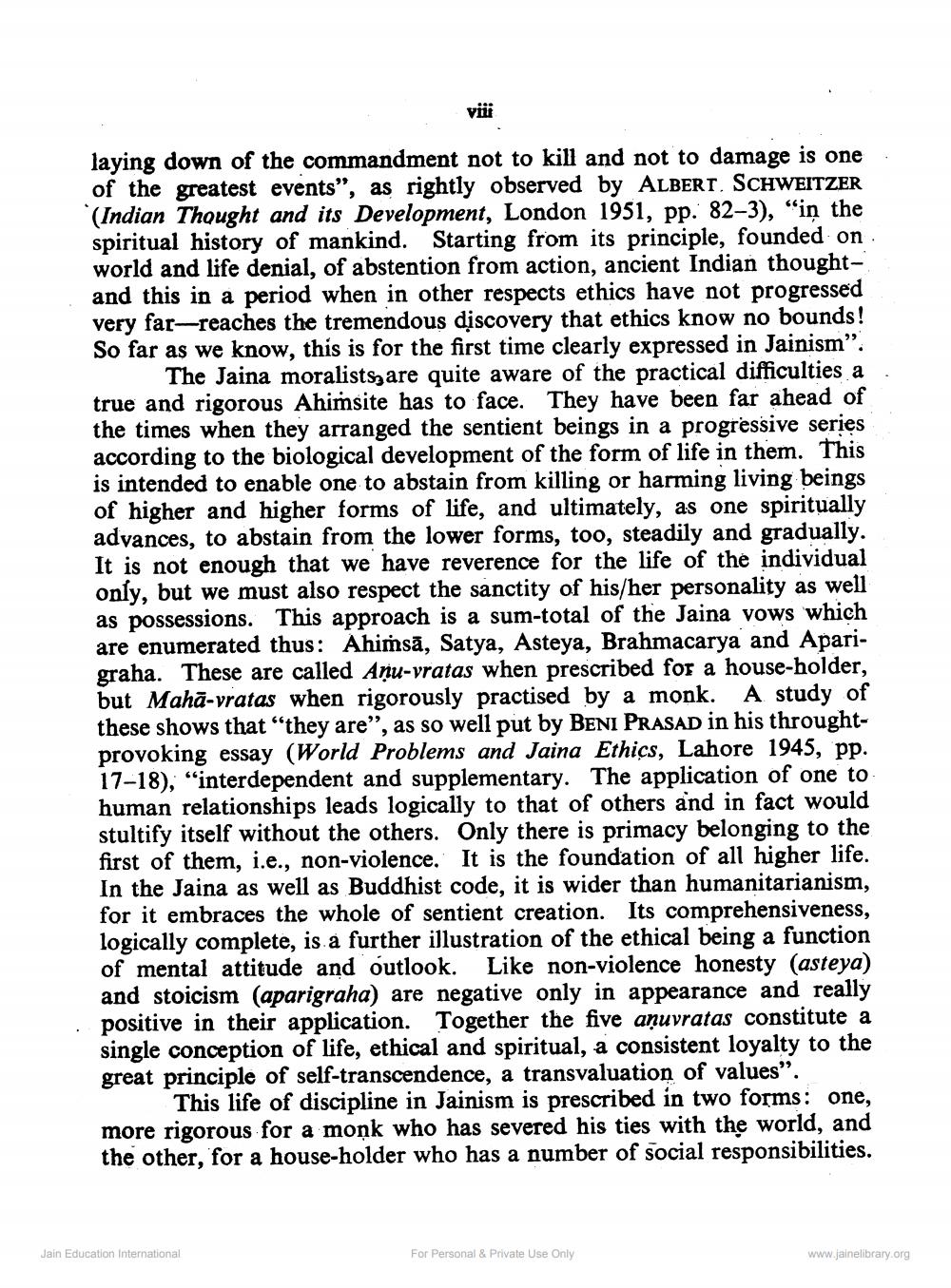________________
viii
laying down of the commandment not to kill and not to damage is one of the greatest events”, as rightly observed by ALBERT, SCHWEITZER (Indian Thought and its Development, London 1951, pp. 82-3), "in the spiritual history of mankind. Starting from its principle, founded on world and life denial, of abstention from action, ancient Indian thoughtand this in a period when in other respects ethics have not progressed very far-reaches the tremendous discovery that ethics know no bounds! So far as we know, this is for the first time clearly expressed in Jainism”.
The Jaina moralistszare quite aware of the practical difficulties a. true and rigorous Ahimsite has to face. They have been far ahead of the times when they arranged the sentient beings in a progressive series according to the biological development of the form of life in them. This is intended to enable one to abstain from killing or harming living beings of higher and higher forms of life, and ultimately, as one spiritually advances, to abstain from the lower forms, too, steadily and gradually. It is not enough that we have reverence for the life of the individual only, but we must also respect the sanctity of his/her personality as well as possessions. This approach is a sum-total of the Jaina vows which are enumerated thus: Ahimsā, Satya, Asteya, Brahmacarya and Aparigraha. These are called Aņu-vratas when prescribed for a house-holder, but Mahā-vratas when rigorously practised by a monk. A study of these shows that "they are", as so well put by BENI PRASAD in his throughtprovoking essay (World Problems and Jaina Ethics, Lahore 1945, pp. 17-18), “interdependent and supplementary. The application of one to human relationships leads logically to that of others and in fact would stultify itself without the others. Only there is primacy belonging to the first of them, i.e., non-violence. It is the foundation of all higher life. In the Jaina as well as Buddhist code, it is wider than humanitarianism, for it embraces the whole of sentient creation. Its comprehensiveness, logically complete, is a further illustration of the ethical being a function of mental attitude and outlook. Like non-violence honesty (asteya) and stoicism (aparigraha) are negative only in appearance and really positive in their application. Together the five anuvratas constitute a single conception of life, ethical and spiritual, a consistent loyalty to the great principle of self-transcendence, a transvaluation of values".
This life of discipline in Jainism is prescribed in two forms: one, more rigorous for a monk who has severed his ties with the world, and the other, for a house-holder who has a number of social responsibilities.
Jain Education International
For Personal & Private Use Only
www.jainelibrary.org




